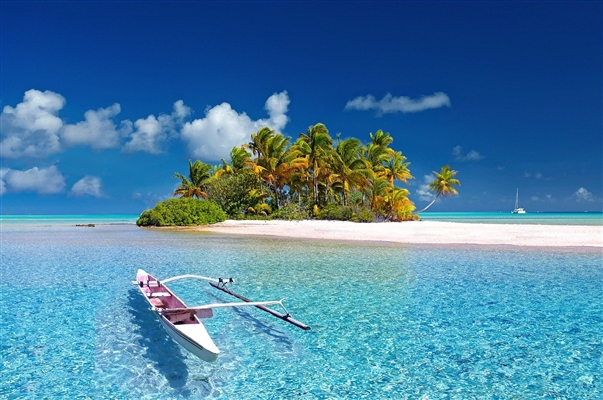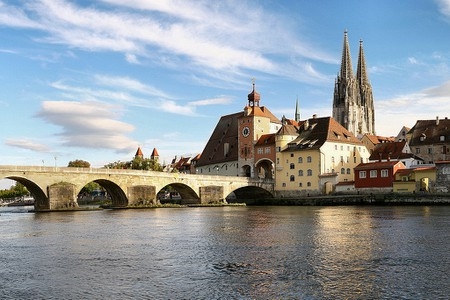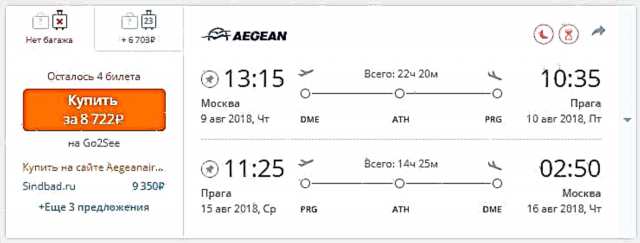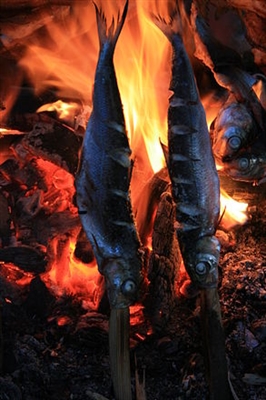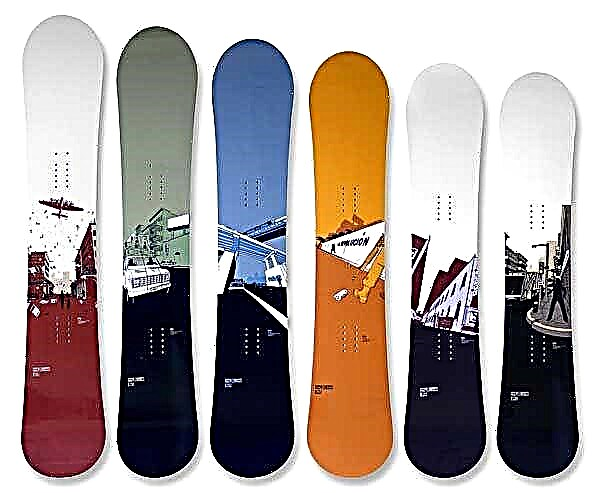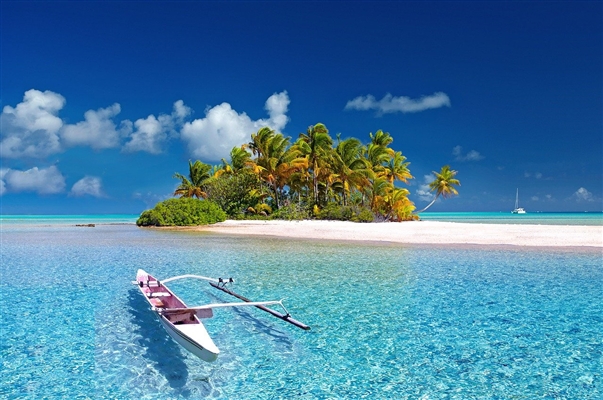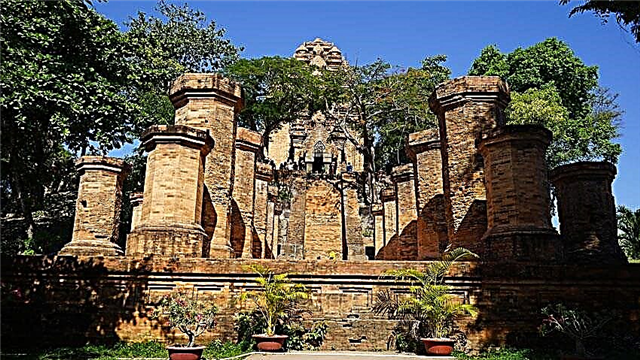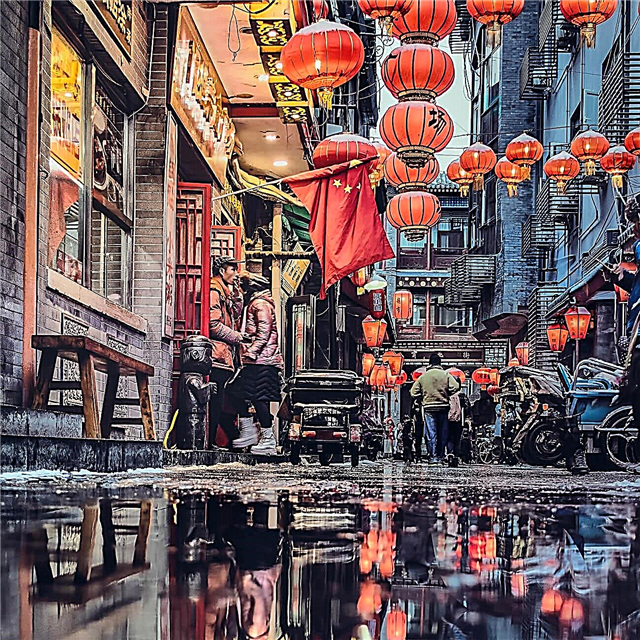
Falling in love with Beijing is easy! Find out about popular attractions like the Forbidden City and offbeat spots that tourists rarely visit. We share tips on what time is best to visit Beijing palaces and parks.
We will tell you why you can fall in love with Beijing! The capital of China is a huge world that contains ancient monuments, beautiful palaces and skyscrapers rushing upwards. The city has streets with noisy traffic and quiet corners of beautiful gardens. See the unique sights of Beijing and your heart will melt.
Tiananmen Square
The first place to see in the capital of China is the huge historical square. Tiananmen is spread over 400 thousand square meters. m. and can accommodate up to 1 million viewers. It is difficult to imagine such a crowd of people, but this is how many Chinese people gather here during the parades.
To the west of Tiananmen is the House of the People's Assembly - the place where the parliamentary sessions of the country are held. To the east is the National Museum, the tall People's Heroes Monument and the Mao Zedong Mausoleum.
The square is not a modern landmark in Beijing. It appeared in the 15th century. Since the Middle Ages, the Main Solar Gate has been dominated here and the Tower of Archers stands here. We advise you to come to the square early, while there is not a large crowd of tourists.

Gate of Heavenly Peace
Do you want to see the landmark of Beijing, which is depicted on the coat of arms of the PRC? The sacred symbol of power is located north of Tiananmen Square. The main entrance to the Imperial City was built in 1420. For 700 years, the sacred gates were repeatedly destroyed during natural disasters and riots, but each time they were rebuilt.
Come early! Every day, at sunrise, a spectacular ceremony takes place at the gate - the military is raising the national flag.
Forbidden City
This is the name of the palace complex of the Ming and Qing dynasties, which ruled China from 1420 to 1912. The Forbidden City houses the Gugun Museum, which houses about a million artifacts.
The largest palace on the planet is surrounded by a protective wall. On the way to the Forbidden City, tourists pass through three gates. In the center rises the Hall of the Highest Harmony - Taihedyan Pavilion. The entrance ticket costs 60 CNY from April to October, and 40 CNY from November to March.
Do not expect that you will be able to see all the interesting places of the Forbidden City in one day! This will take at least a week.

Prince Gong's Palace (Gongwangfu)
The beautiful palace of Prince Gong is located near the Qianhai Lake. In terms of scale, Gunwangfu is second only to the Forbidden City. The territory of the princely palace occupies 60 thousand square meters. m and is divided into two parts - park and residential. The complex includes a museum and an old theater. On the platform, which is decorated with a screen made of boxwood, performers from the Peking Opera and the Chinese circus perform. The entrance ticket to the museum costs 40 CNY, with a guided tour - 70 CNY.
Summer Palace (Yiheyuan)
In the East, they love to express themselves beautifully, therefore the summer palace of the emperor is called the Garden of Peace and Harmony. Yiheyuan is not at all like the austere Forbidden City. Ornate buildings and a luxurious park are the sights of Beijing that set you up for relaxation and contemplation.
Try to count the lion figurines on the Shiqikun Bridge and admire the Zhihuihai Temple! In the high season, the entrance to the palace costs 30 CNY, and a ticket for visiting all the interesting places of the complex is 60 CNY.

Old Summer Palace (Yuanmingyuan)
The emperor's old summer palace is no less beautiful than the Yiheyuan. Translated from Chinese, its name means "Gardens of perfect clarity." Picturesque stone ruins in the shade of trees remind of the fleeting time, which even the most powerful rulers of the world could not cope with.
National Museum
For a history of the most populous nation on the planet, visit the Tiananmen Square Museum. The National Museum of China has exhibits that are not found anywhere else in the world.
Look at the sacrificial tripod weighing 800 kg and more than 3 thousand years old. One of the most famous artifacts is the "Jade Prince", a burial robe sewn with gold thread from polished pieces of jade. You can see these treasures for free.
Sky Temple
The ancient Chinese believed that their emperor was the messenger of heaven, so this power needed feedback. Every year, during the winter solstice, a solemn prayer was performed in the majestic Temple of Heaven.
The rounded building looks like a decorative box. The three-tiered roof is supported by 28 pillars. In the middle there are 4 pillars - the seasons, and around them - 12 columns, which symbolize the months. The next row of 12 pillars means 12 o'clock.
Entrance costs 30-35 CNY. Come early in the morning and watch the Chinese do oriental gymnastics in the luxurious park.

Temple of Confucius (Qufu)
One of the most notable sights in the center of Beijing has been decorating the city since the beginning of the 14th century. The picturesque temple is divided into four courtyards and is surrounded by 189 stone steles with quotes from the writings of Confucius. Everything here adjusts to a philosophical mood!
Ticket prices depend on the season - 15-30 CNY. Some Chinese people order the performance of ceremonial music for a fee.
Lamaist Temple (Yonghegong)
The colorful temple in the northern part of the Imperial City represents the most significant milestone in the history of Chinese Buddhism. Yonghegong was built during the reign of Yun-Qingwang, which called for harmony and justice.
In the main part of the temple - the Hall of Ten Thousand Luck - there is a sandalwood statue of the Buddha of the future with a height of more than 25 m. Look here, and, perhaps, after a visit, luck will fall on you like from a cornucopia! Entrance to a Buddhist monastery costs 25 CNY.

Lugou Bridge (Marco Polo Bridge)
It is one of the oldest landmarks in Beijing. The old bridge over the Yongdinghe River has always existed. In 475 BC, there was a wooden bridge that connected the two banks of the river at a distance of 16 km from the historic center of Beijing. At the beginning of the 12th century, the bridge was built of stone and made arched. This is exactly how the traveler Marco Polo described it.
Today, the bridge with 500 stone lions is allowed to move only on foot or by bicycle. In the middle, a strip of old masonry has been preserved, on which traces of carts and horse hooves are visible. Real seals of the time! The entrance to the bridge is paid - 20 CNY.
Lake Houhai
The main attractions of Beijing include a chain of artificial lakes, which were dug near the Imperial Palace in the XIII-XIV centuries. The most beautiful reservoirs are still maintained in perfect condition.
Houhai Lake is connected by channels with Xihai and Tsanhai lakes. Picturesque banks with weeping willows, restaurants, bars, shops and souvenir shops on the embankments attract many tourists. It's great on the lake in the evening, when the nightclubs open and the air is filled with aromas of different cuisines of the world. Walk the narrow streets - hutunamand you can easily feel the spirit of the old city!
Zoo
An attraction worth seeing in Beijing with children is located at the level of the second ring road. The zoo is home to more than seven thousand individuals of different animals - crocodiles, elephants, snub-nosed monkeys, giant salamanders, cranes, rhinos and tigers.
In the Beijing Zoo, giant pandas are kept and bred - animals that China considers a national wealth and distributes to zoos around the world under special conditions. There are a lot of people wishing to get here, so plan your visit on a weekday! A complex ticket to visit the Panda House, the zoo and the aquarium is not cheap - 170 CNY. But children are allowed free!

Niujie Mosque
If you are interested in the architectural sights of Beijing, do not miss the unique temple that was built in the city in 996. The first Islamic missionaries arrived in China in the 7th century. Gradually, a Muslim community arose in the capital of the country.
The Chinese mosque was built according to national canons. The red and green facades are carved and the building has a practical tiled roof. The interiors are designed in strict Islamic traditions. Tourists are only allowed inside on Sundays.
TV tower
If you dream of seeing the sights of Beijing from a bird's eye view, take in the panorama of the city from the Beijing TV Tower! From a height of 238 m, the streets and buildings of the capital are visible at a glance. If you want to see everything in great detail, use a telescope. A ticket to the TV Tower costs 99 CNY.
At a height of 221 m, there is a restaurant on a revolving platform. The average check here is quite democratic - 200-300 CNY. The Underwater World of the Pacific Ocean entertainment center is open under the tower, where you can see funny penguins, jellyfish and fish. Admission for adults costs 150 CNY.
Skyscrapers Wangjing SOHO
Skyscrapers in the Wangjing District are Beijing's ultra-modern landmark. The pride of the Chinese high-tech is three mountains of glass and concrete, which rise to heights of 118, 127 and 200 m.The air conditioning, energy and water supply systems are so well thought out that Beijing skyscrapers consume 40% less than skyscrapers in other countries of the world ... Admire the sleek curves of the sky!

Yabaolu Market
To hear the native language and look at the descendants of Russian emigrants, go to the colorful Yabaolu market. Our compatriots settled here at the beginning of the last century. Meticulously inspect the thing you like, bargain, and you will bring down the initial price by 3-4 times. Please note that the area is not too safe - beware of pickpockets!
Pearl market
The five-storey shopping complex has a completely modern history. It was built in 1995 to gather all the merchants under one roof and clear the way to the Temple of Heaven. Today, the Pearl Market is the most popular place visited by tourists.
On the 1st and 2nd floors, they sell clothes and electronics. The third floor is reserved for pearls, on the 4th floor there are large trading companies, and on the 5th floor there are jewelry stores. Buy a string of real Chinese pearls and you will receive a nice bonus as a gift - small pearl earrings!

Lyulichan street
A paradise for connoisseurs of Chinese antiquity is located south of the Forbidden City. An antique and souvenir bazaar stretches along the entire length of the picturesque street. Most of the houses on Lyulichan were built in the 19th century, and their roofs are decorated with gold or red tiles. On the first floors, there are several galleries displaying works by masters of Chinese calligraphy. You will not take your eyes off the camera!
Digital Beijing Building
The exact opposite of the Wangjing skyscrapers is the dark cubic building of Digital Beijing, the creation of the Chinese architect Pei Zhu. Angular shapes and dark color evoke different responses - from admiration to complete rejection of the project, but there are no indifferent ones.
We advise you to look at the original building in the evening when the LED lights come on. The green lights that creep across the 13-story facades make them look like a barcode.

Uncommon sights in Beijing
Mausoleum of Mao Zedong... The Chinese leader in the world is controversial, but no one can deny the role of Mao Zedong in the history of China. The queue for the mausoleum in Tiananmen Square is moving fast. Admission is free, and you need to pay 15 CNY for a luggage room.
Sishiku Cathedral... Jesuit missionaries came to China in the 16th century. After doctors from Europe cured the Kanxi Emperor, he gave the Jesuits a piece of land and allowed them to build a Catholic temple. You will be surprised, but the Gothic cathedral is decorated with Chinese carvings and statues of stone lions.
Botanical Garden... Compared to the main attractions in Beijing, the botanical garden is young. It was founded in 1955. Come here to see the flower-shaped glass conservatory building and relax in a wonderful park!
Qianmen street... To see the houses of traditional and colonial architecture from the 19th and early 20th centuries, take a walk along the street that runs south of the Mao Zedong mausoleum. A rare tram runs along it.
Silk factory... The production, museum and shop will be of interest to anyone who wants to learn more about silk production in China.
Happy Valley Amusement Park... Tired of sightseeing tours in Beijing? Ride the rides at the Chinese equivalent of Disneyland.
Jade Island in Beihai Park... The white Buddhist temple at the top of the island is a symbol of China's commitment to Buddhism. From here, wonderful views of the Forbidden City, green parks and lakes open up.
Jingshan Park gazebos... Each building has a poetic name - "Delight in aromas", "Beautiful views", "Tower of hope" and "Contemplation of beauty". Taking a walk in a beautiful landscape park, you will easily forget what a century it is!
Peace park... To see the sights from all over the planet in Beijing, go to the miniature park. On an area of 460 thousand square meters. m contains famous monuments and buildings from different countries. Entrance costs 80-100 CNY.

What to see in Beijing in 1 day
- National Museum of China
- Tiananmen Square
- Forbidden City
- Beihai park
- Sky Temple
- The Yiheyuan palace complex.
What to see in Beijing in 2 days
To the sights that we wrote about above, add
- Yuanmingyuan old palace
- Zoo
- Yabaolu Market
- Lyulichan street
- Temple of Confucius
- Beijing TV Tower.
The nearest section of the Great Wall is located 70 km from Beijing, near the Badaling railway station. If you want to be sure to see an iconic landmark in China, you will have to donate something in the city.


